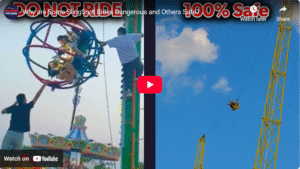
SlingShot rides are a popular thrill attraction found in amusement parks and tourist destinations. These rides use a high-tension slingshot mechanism to catapult riders into the air at extreme speeds, often reaching heights of 100–300 feet. While the excitement draws many adrenaline seekers, concerns about safety vary depending on the ride’s design, maintenance, and operational standards. Some SlingShot rides are considered dangerous, while others are relatively safe due to several key factors.
Design and Engineering
The core safety of any SlingShot ride depends heavily on its engineering and design. Reputable manufacturers follow strict industry standards, using high-quality materials, computer-aided design, and rigorous testing protocols. Safe SlingShot rides typically include redundant safety systems, like dual restraint mechanisms and backup cables, ensuring that even if one system fails, another can prevent injury. Conversely, poorly designed rides with minimal safety checks or inferior materials can be hazardous.
Maintenance and Inspection
Regular maintenance is critical. Safe SlingShot rides are inspected daily, weekly, and monthly, with comprehensive records kept for every component, especially cables, pulleys, and harnesses. These rides are also subject to periodic inspections by local authorities or third-party safety auditors. Dangerous rides often result from neglect, poor upkeep, or skipped inspections, increasing the risk of mechanical failure.
Operator Training and Procedures
Human error is another major factor. Well-trained operators understand the ride’s mechanics, follow safety procedures, and know how to respond in emergencies. They check harnesses and seatbelts carefully and monitor weight and height limits. In contrast, undertrained or careless staff might overlook critical safety steps, putting riders at risk.
Environmental and Situational Factors
Wind, lightning, and temperature can affect the ride’s safety. Safe operations take these into account, often suspending rides during adverse weather. Riskier rides might operate despite poor conditions, increasing the danger.
Regulatory Oversight
SlingShot rides in countries or regions with strong safety regulations tend to be safer. In places with limited or poorly enforced regulations, rides may be operated without adequate oversight, increasing the risk of accidents.
Conclusion
In summary, the safety of SlingShot rides depends on a combination of design quality, maintenance, operator training, environmental awareness, and regulation. While many are perfectly safe and thrilling, others become dangerous due to neglect or poor standards. Riders should research the operator’s safety record and local regulations before deciding to ride.